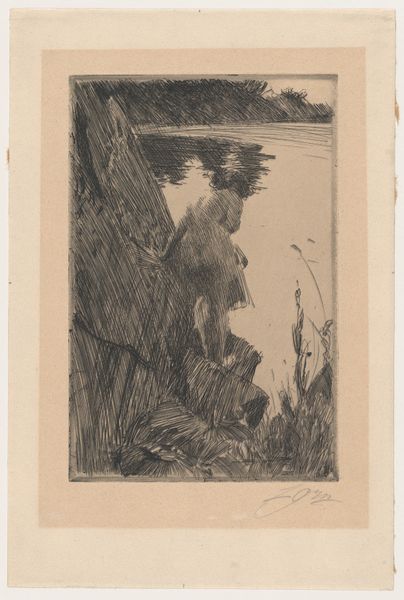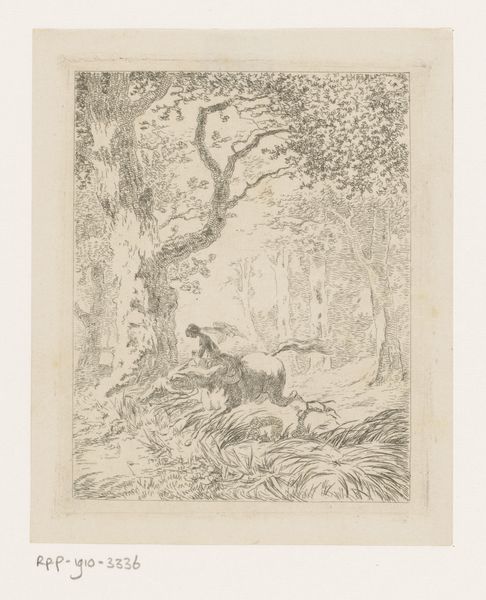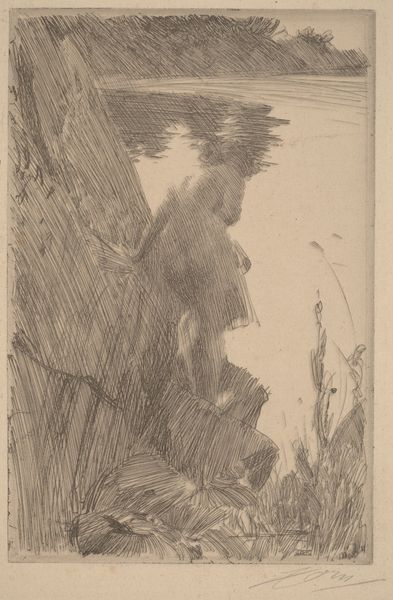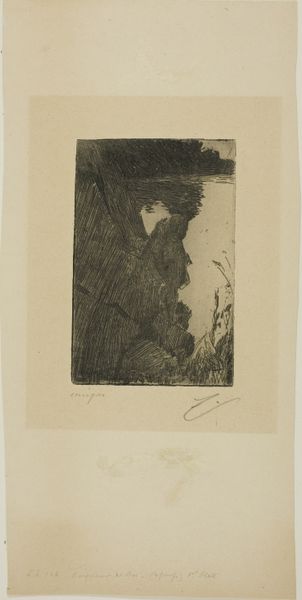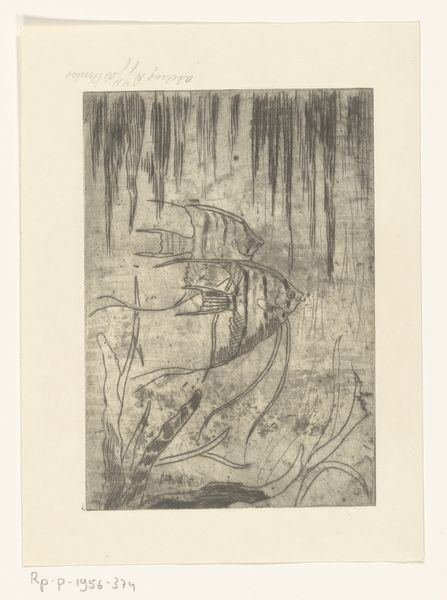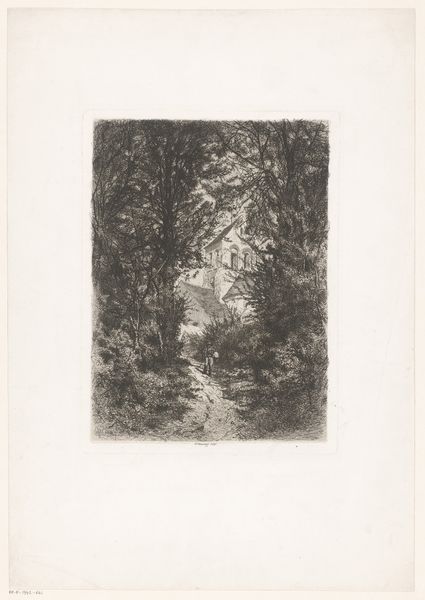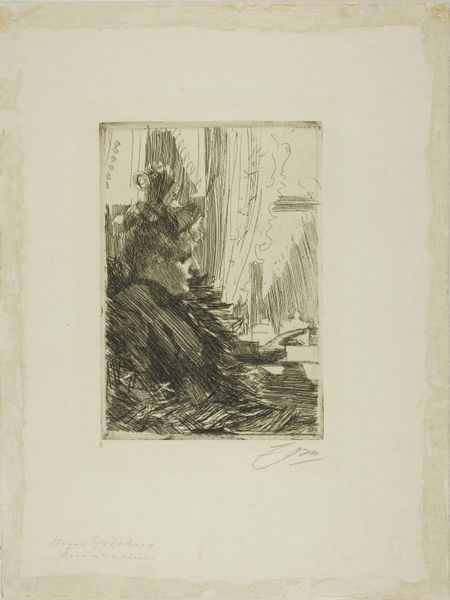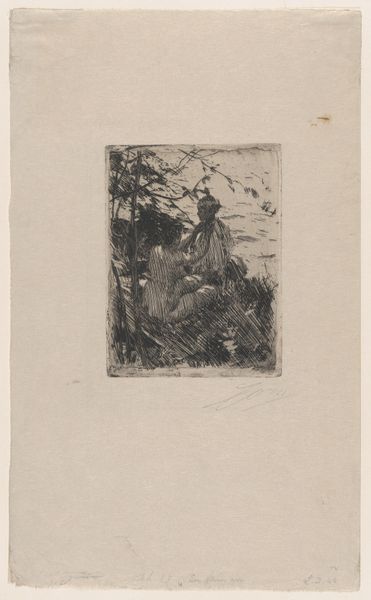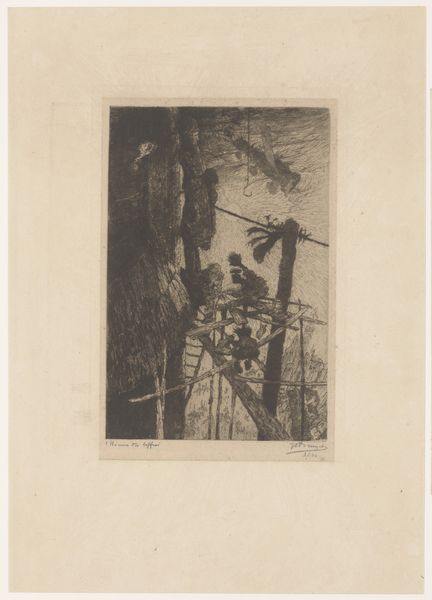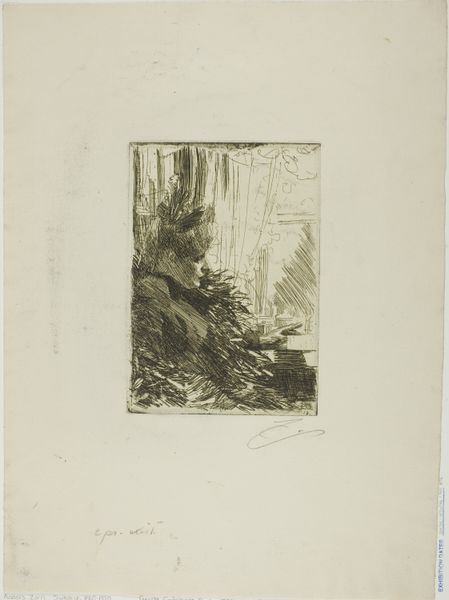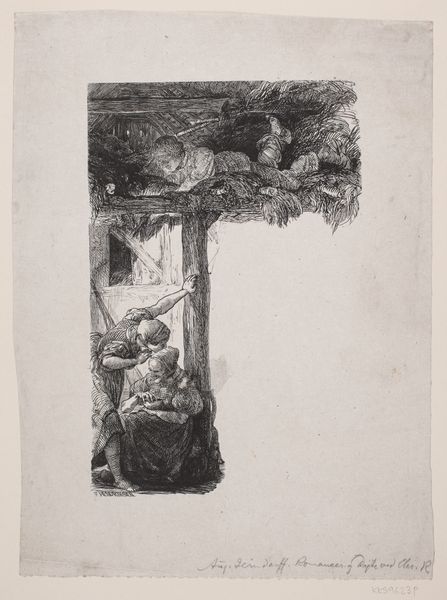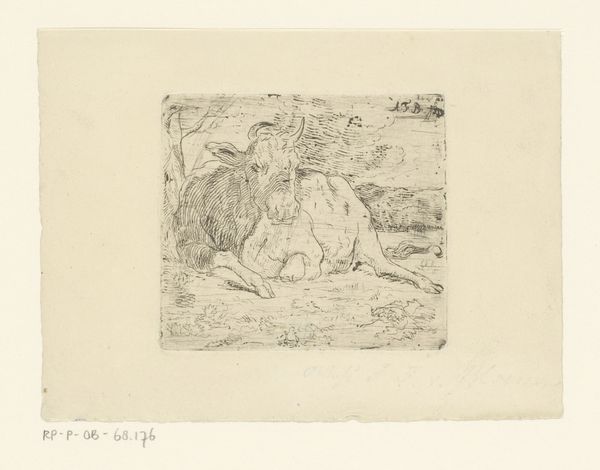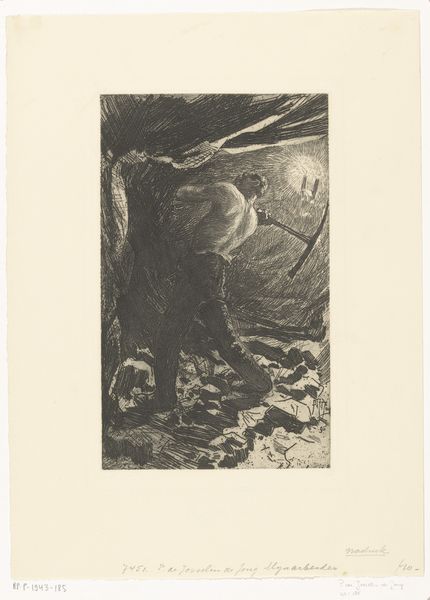
Dimensions: 233 × 169 mm (image); 240 × 176 mm (plate); 371 × 264 mm (sheet)
Copyright: Public Domain
Anders Zorn made this etching, Bather (Evening) II, using a metal plate, acid, and ink. It’s a decidedly unglamorous process for such an intimate image of a woman. Zorn was a master of manipulating line, using hatching and cross-hatching to create a sense of depth and shadow. Look closely, and you can see how the density of lines varies to suggest the play of light on the bather’s skin, the rough texture of the rocks, and the still surface of the water. Etching, unlike painting, is a reproductive medium. Zorn would have made multiple impressions of this image, each one requiring careful inking and printing. The labor involved in creating each print stands in contrast to the fleeting moment captured in the image, adding a layer of complexity to our understanding of the work. Ultimately, considering the processes by which artworks are made allows us to appreciate the skill and labor involved, and to reflect on the social and cultural significance of these choices.
Comments
No comments
Be the first to comment and join the conversation on the ultimate creative platform.
